Lenovo ThinkSystem ST50 Compute Performance
For this exercise, we are using our legacy Linux-Bench scripts which help us see cross-platform “least common denominator” results we have been using for years as well as several results from our updated Linux-Bench2 scripts. At this point, our benchmarking sessions take days to run and we are generating well over a thousand data points. We are also running workloads for software companies that want to see how their software works on the latest hardware. As a result, this is a small sample of the data we are collecting and can share publicly. Our position is always that we are happy to provide some free data but we also have services to let companies run their own workloads in our lab, such as with our DemoEval service. What we do provide is an extremely controlled environment where we know every step is exactly the same and each run is done in a real-world data center, not a test bench.
We are going to show off a few results, and highlight a number of interesting data points in this article.
Python Linux 4.4.2 Kernel Compile Benchmark
This is one of the most requested benchmarks for STH over the past few years. The task was simple, we have a standard configuration file, the Linux 4.4.2 kernel from kernel.org, and make the standard auto-generated configuration utilizing every thread in the system. We are expressing results in terms of compiles per hour to make the results easier to read:
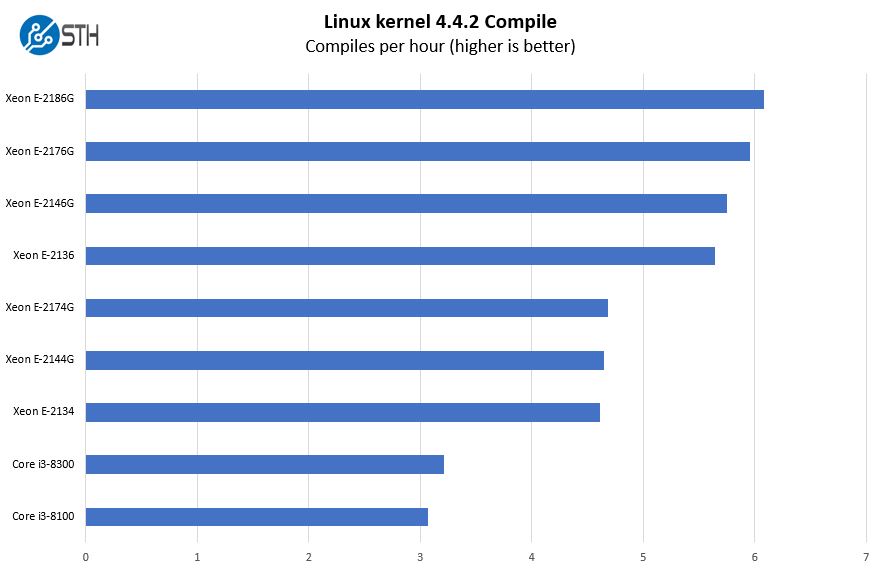
This gives you some sense of the scaling of the new processors. Although we have focused mostly on the Intel Xeon E-2100 series CPUs in this review, Lenovo also offers the Intel Core i3-8100 and i3-8300 in the ThinkSystem ST50. These are lower-cost options still providing solid performance. Lenovo also has some Pentium and Celeron parts configurable for deployments that are seeing the absolutely lowest costs.
c-ray 1.1 Performance
We have been using c-ray for our performance testing for years now. It is a ray tracing benchmark that is extremely popular to show differences in processors under multi-threaded workloads. We are going to use our 8K results which work well at this end of the performance spectrum.
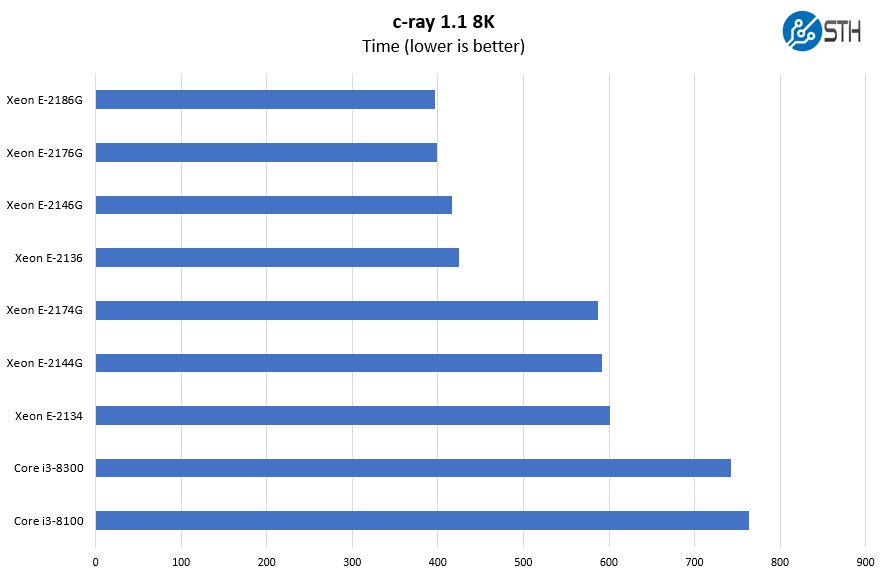
The Intel Xeon E-2174G to Xeon E-2134 CPUs here represent 4 core/ 8 thread parts. In the previous generation, this was the highest core count in each socket. Here, c-ray shows why it was such a big upgrade to the 6 core parts.
7-zip Compression Performance
7-zip is a widely used compression/ decompression program that works cross-platform. We started using the program during our early days with Windows testing. It is now part of Linux-Bench.
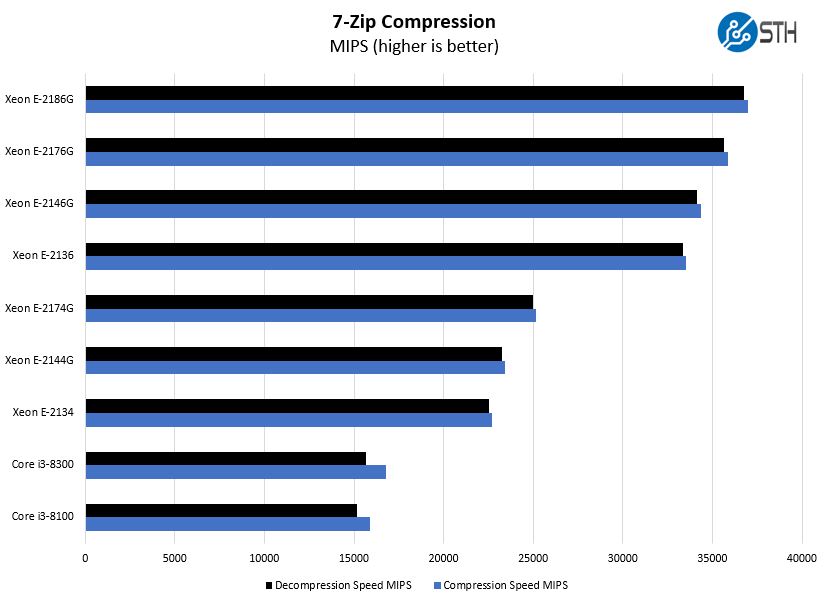
In this generation, the Intel Xeon E-2100 series now supports up to 6 cores per CPU and 12 threads. Our test system came configured with the Intel Xeon E-2186G, but we are showing a wider range of options. This 6 core/ 12 thread part is very competitive with the lower-end Intel Xeon Silver parts.
Sysbench CPU test
Sysbench is another one of those widely used Linux benchmarks. We specifically are using the CPU test, not the OLTP test that we use for some storage testing.
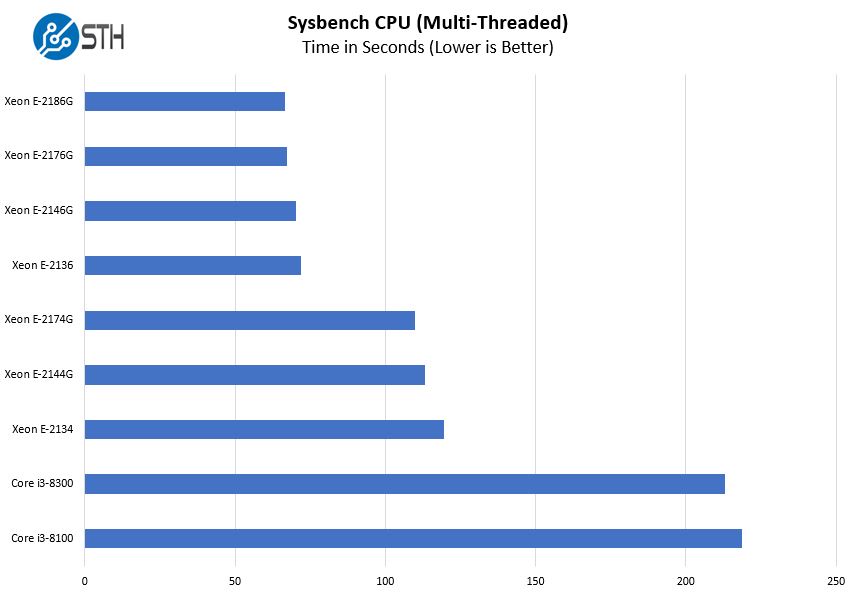
The Intel Xeon E-2136 does not have a “G” suffix. As a result, it does not have the iGPU. In the Lenovo ThinkSystem ST50 using one will mean the loss of DisplayPort functionality. That means there is a bit more than just the raw price/ performance ratios here.
OpenSSL Performance
OpenSSL is widely used to secure communications between servers. This is an important protocol in many server stacks. We first look at our sign tests:
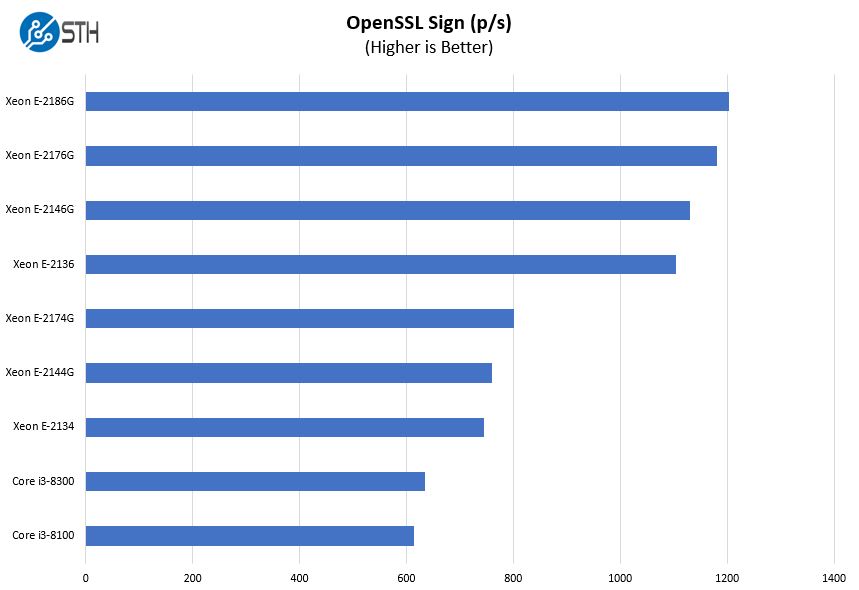
Here are the verify results:
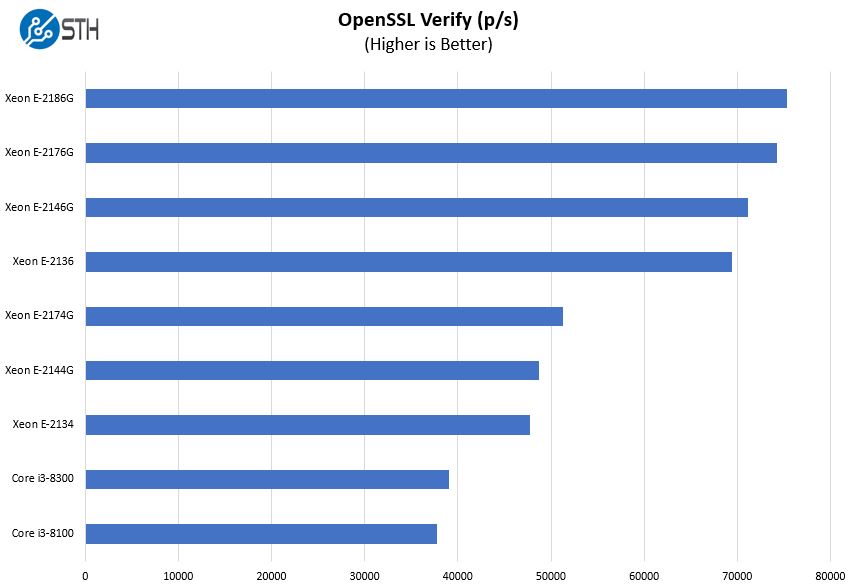
OpenSSL is a foundational technology that underpins many of today’s applications. One can see that the new six-core CPUs perform extremely well in this test. In our Intel Xeon E-2146G Benchmarks and Review we called it our top pick. In the Lenovo ThinkSystem ST50 it has the integrated GPU to power DisplayPorts. It also can provide solid cost savings while still providing the majority of the performance of the platform. Smart STH readers that want higher-end CPU performance will look at this option.
UnixBench Dhrystone 2 and Whetstone Benchmarks
Some of the longest-running tests at STH are the venerable UnixBench 5.1.3 Dhrystone 2 and Whetstone results. They are certainly aging, however, we constantly get requests for them, and many angry notes when we leave them out. UnixBench is widely used so we are including it in this data set. Here are the Dhrystone 2 results:
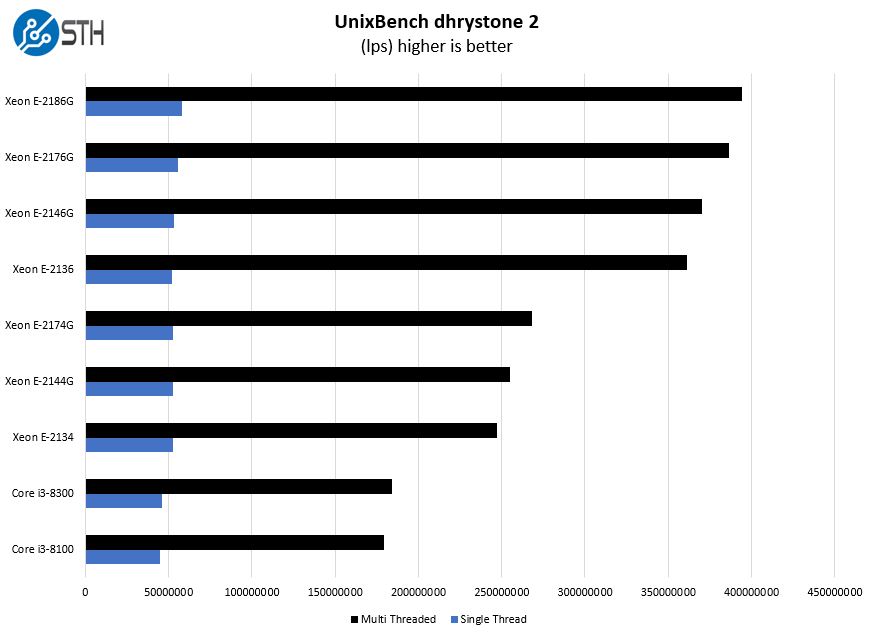
Here are the whetstone results:
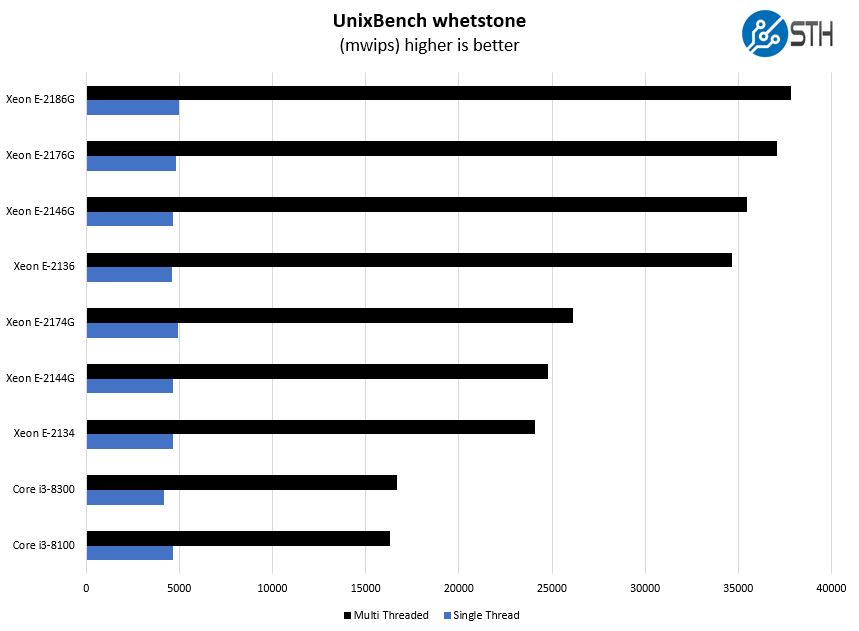
Again we are seeing a common step function here with the Intel Xeon E-2100 six-core parts performing very well.
Chess Benchmarking
Chess is an interesting use case since it has almost unlimited complexity. Over the years, we have received a number of requests to bring back chess benchmarking. We have been profiling systems and are ready to start sharing results:
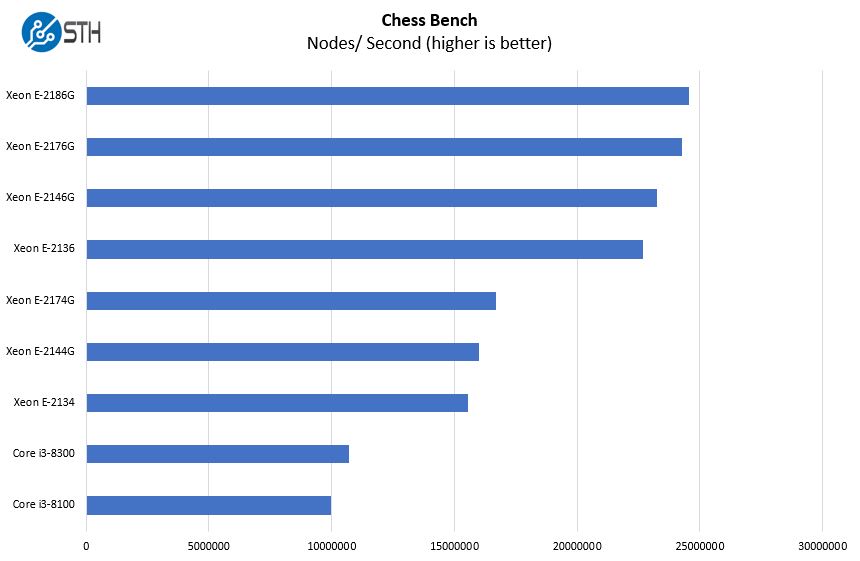
Moving from an Intel Xeon E-2174G to an Intel Xeon E-2146G may seem like a decrementing numerical value, but the performance increase is significant. With Intel’s new naming conventions, the last digit represents the number of cores so we suggest looking for the “G” and the last digit. For maximum performance, you want a “6G” in the Intel Xeon E-2100 generation. When the already released Intel Xeon E-2200 series comes to servers, you will want the “8G” parts. You can see our Intel Xeon E-2200 Series SKU List and Value Analysis piece for more on the upcoming parts.
Next, we are going to look at the power consumption before covering the STH Server Spider and then our final words.




My company recently deployed one of these server for a client. We ran into an issue with memory compatibility, if the system detects any third party ram it will stop at a bios screen proclaiming “unqualified dimm detected” and wait indefinitely for the f2 key to be pressed.
I’m really curios when Lenovo/HP/Dell start to realize that there is a new kid on the CPU block made by AMD which may make their small/cheapest servers even more cheap and yet wipe the floor with intel competition. Come on, having Ryzen in this kind of box with ECC RAM would be something nice…
I’ve also just had the “Unqualified DIMM detected” message appear after reinstalling 3rd party RAM in the server.
It would appear this is now a “feature” on Lenovo servers. There isn’t a way of disabling it. You must use Lenovo’s memory or you get the F2 message on boot.
https://support.lenovo.com/gb/en/solutions/ht115052-unqualified-dimm-has-been-detected-lenovo-server-and-lenovo-thinksystem